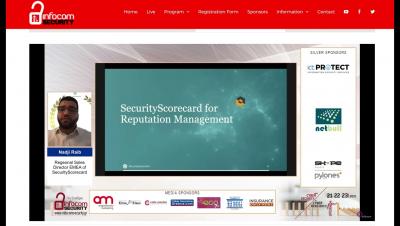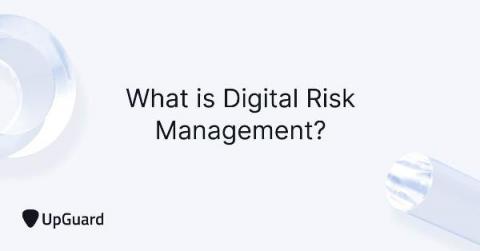Security | Threat Detection | Cyberattacks | DevSecOps | Compliance
Risk Management
Full Cybersecurity Regulations Overview for DoD Prime and Subcontractors
Session 1: The Need for Cybersecurity in U.S. Manufacturing
Session 2: DFARS & CMMC Overview
Complying with HIPAA Breach Notification Rules
Learn all about the HIPAA breach notification rules and how you can best protect your business by being ready to comply with anticipated 2021 HIPAA breach notification rules. The HIPAA (Health Insurance Portability and Accountability Act) breach notification rules spell out how hospital systems, physicians, and other healthcare providers must notify their patients, as well as the U.S.
How to Manage Your Digital Risk in 2021
Though digital transformation is necessary, it's accompanied by some serious risks. This is the scaling conundrum of 2021 - organizations must embrace digitization to remain relevant, however, the greater the digital transformation, the greater the associated digital risks. Thankfully, with the correct digital risk management, organizations can continue to safely embrace digital transformation while mitigating the byproduct of digital risks.
The Most Common Corporate Cybersecurity Risks
“Corporate cybersecurity” refers to the tactics and methodologies that organizations use to safeguard sensitive data, prevent unauthorized access to information systems, and protect themselves from cyber attacks such as malware or ransomware attacks, trojan viruses, social engineering or phishing email, endpoint breaches, and so forth. Cybercrime can be catastrophic for small businesses, but even large enterprises don’t have the luxury of taking cybersecurity for granted.
Cyber Risk - Why Corporate Governance Matters
In the high-pitched, relentless battle against cyberattacks, much of the attention and energy has been focused on technical solutions, regulatory compliance, and balancing risks with opportunities. What about corporate governance? What role does executive and board-level oversight play in ensuring robust cybersecurity … and what role should it play?
Corporate Reputation | NED Webinar Series - Part 1: External Threats
What is a Compliance Risk Assessment?
As global regulations for data privacy and cybersecurity continue to proliferate, the pressure for organizations to manage compliance risk grows. To meet the demand for greater compliance risk management and value for corporate stakeholders, compliance professionals must be sure they have a thorough understanding of their compliance obligations and potential vulnerabilities.









